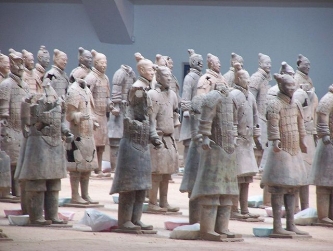ARTH 350 Studies in the History of Ceramics
- Fridays, 11:45am - 2:15pm
- EV 1.605
- Instructor: Dr. Susan Surette
This course explores ceramics around the world and through the ages by mapping multiple intersections of clay/ceramics and “bodies.” At the most basic level, “bodies” will be understood in physical terms of different kinds of clay that form the starting point of the ceramic object, but at another level we will look at the metaphoric relationship between the clay object and the human body. Ceramic production and consumption of ceramic objects (vessels, figurines, and sculptures) play an integral role within human life cycles, associated with key transitional moments, and will be considered in relationship to representations of and rituals involving reproductive, working and deceased bodies, among others. We will look at larger figurative sculpture and smaller figurines as well as the body as surface decoration on vessels. Physical and social bodies formed through ceramic practice, consumption and use will also be considered, including the gendered body as maker and consumer. Within each week’s historical case study, we will discover contemporary works that draw upon it. Specific historic examples to be studied include the Emperor Qin’s Terra Cotta Army, Greek Red and Black figure vessels, First Nations vessels, Chinese narrative porcelains, Nigerian Nok figures, Renaissance sculptures and Meissen porcelain figurines.
 Broken Warriors of the Terracotta Army
Broken Warriors of the Terracotta Army

